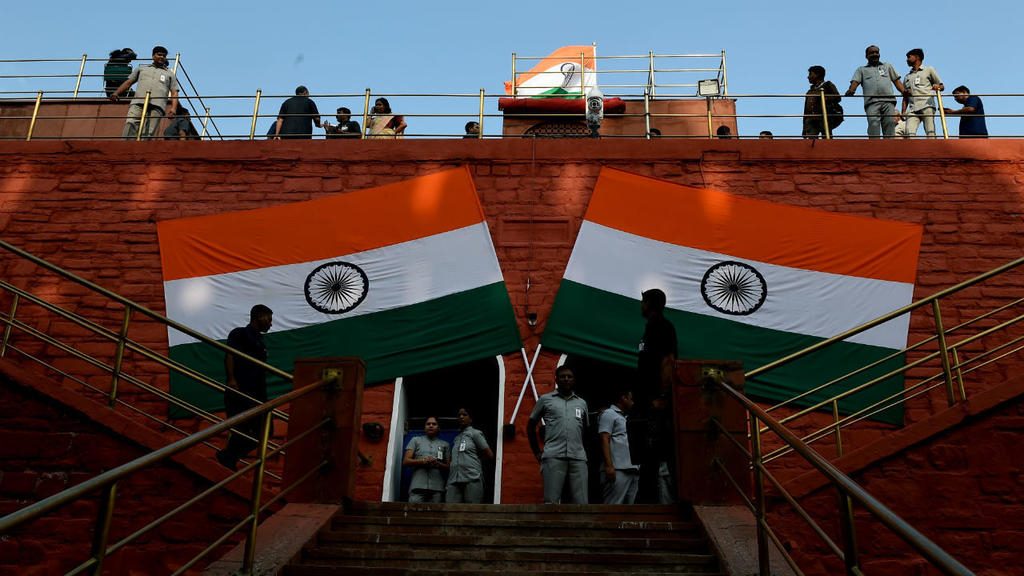
Mid-August is when the subcontinent celebrates independence from Britain. Born in a cauldron of hate 72 years ago, India today is again filling it to the brim.
In one fell swoop, Mr. Modi has denuded Kashmir of the flimsy shroud purporting to preserve its cultural and territorial integrity through articles 370 and 35A in the constitution — the latter empowering the state legislature to define permanent residents while Article 370 ensured special status allowing a state flag, a separate constitution and autonomy over internal administration.
The proverbial velvet glove masking the iron fist has been removed. It allowed a certain pretense by the quisling generations of leadership while they shielded their ears from the sound of military boots. All the while, restive young men tired of fetters and humiliation surrendered to the desire for freedom and paid the price … in blood.
How many have died? No one really knows but in the decades since the 1980s, estimates run to a hundred thousand, perhaps more, although Delhi’s figures are naturally lower. And a new cycle of death is about to commence.
The question of which particular central government is in overall control matters less when the residents of a state/province/territory are free to run their own daily lives. In Kashmir they are not, because Delhi does not agree with their wants. As a matter of fact, the whole Indian subcontinent has been fractious, often at war, and wars have a cost.
In 1950, three years after independence, India had a per capita GDP placing it in the middle range among the countries in the world. Now despite its ‘economic miracle’ it is near the bottom preceding only destitute African nations and war-torn Syria and Afghanistan. Pakistan and Bangladesh are similar.
In one of the world’s hottest (but clearly not hot enough) economies, almost 80 percent of India lives on less than a half dollar a day or 20 rupees. So reported Reuters in 2007, drawing on the report, “Conditions of Work and Promotion of Livelihoods in the Unorganized Sector,” published by India’s “National Commission for Enterprises in the Unorganized Sector” or (NCEUS).
It identifies most of those having to live on less than 20 rupees (or 50 US cents in 2007) as from the informal labor sector, providing day labor with no job security. Worse, 26 percent were living below the then poverty line of 12 rupees per day, until the gate posts for poverty were changed to burnish the country’s image. Meanwhile, the rupee has nearly halved in value to its present 71 to the dollar. The fate of Pakistan and Bangladesh are not dissimilar.
But compare the subcontinent to other countries that were not too different economically seven decades ago. In 1950 India had a per capita GDP of US $597. Pakistan $650; Indonesia, Thailand and South Korea in the mid $800 range. The figures for 2018 from the World Bank tell their own story: India $2016, Pakistan $1473, Indonesia $3894, Thailand $7274 and South Korea an off the scale $31,363. Why are India, Bangladesh and Pakistan not even close to any of them?
Pakistan has been damaged by the spillovers of the Afghan war but that is a small part. What about India? Kashmir and its other insurgencies drain resources. Moreover, military expenditures driven by the mistrust of each for the other, and India’s search for some undefined and unattainable glory are also part of the problem.
The major cause by far is incompetent governance unable to deliver sound economic policy, which starts first with a decent education system. The wealth of a country in our modern world lies with the capabilities of its work force, not last century’s divisive nationalist rhetoric. If it is not clear enough to the governments in the subcontinent, then Lee Kuan Yew of Singapore (current per capita GDP over $58,000) has a blueprint.
Dr Arshad M Khan (http://ofthisandthat.org/index.html) is a former Professor based in the U.S. whose comments over several decades have appeared in a wide-ranging array of print and internet media. His work has been quoted in the U.S. Congress and published in the Congressional Record.











Đăng nhận xét